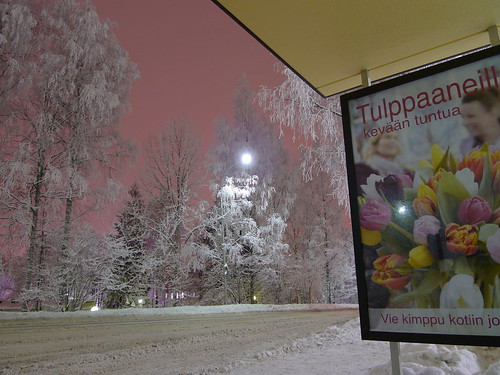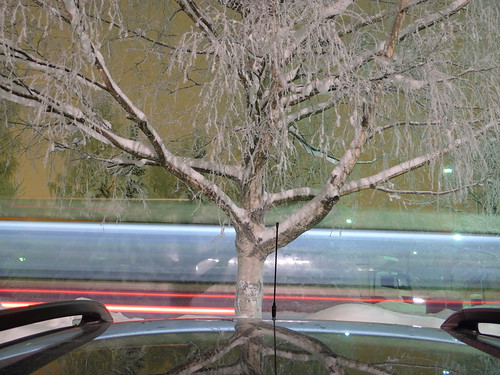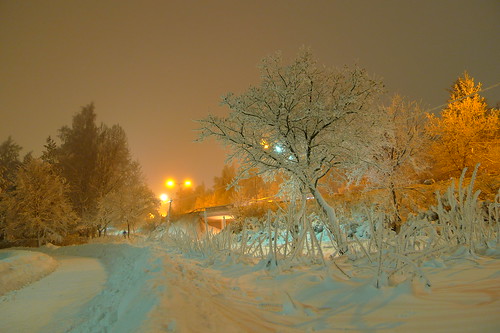Here are three photographs taken today night, when the street lamps of various types are the prevalent light source. Today we had low-hanging clouds and a little bit of fog, which generated an interesting mixture of colored light from above.
In the last photograph you see clearly the differences of the different lights, and the image doesn't work so well, although it does have some interesting properties. (This is continuation to an earlier posting.)
What was interesting to see was how fast the eye adapted to the light source. If you looked at the "colored" shadows, after a while they we no longer colored but a shade of gray. And when you looked away and back, the colors returned for a small moment but there sort of "slithered away", almost like living things trying to avoid not being seen.
One reason for this behavior might be the low overall level of light, thus the eye is working in a mixture of day and night vision modes. You might want to do your own "seeing" experiments during the long winter evenings and nights to find out whether your vision works in a similar manner.
Update: I forgot to mention another kind of study of light. Finnish scientist have invented a new kind of cure for SAD (Seasonal Affective Disorder): put led lights into the ears, and this cures the depression in four weeks for almost all patients. Apparently the bones are so thin in the ear canals that the light reaches the brain (or certain key areas of the brain), starting the production of hormones. But I'm not yet quite convinced of the reality of this invention.
Wednesday, January 13, 2010
A study of snow and light
Subscribe to:
Post Comments (Atom)






2 comments:
Well, actually I love #3. Night pastel! Great colors :)
Those colors are quite rare, due to the fine-grained cold snow falling and diffusing the nearby streetlights.
Post a Comment